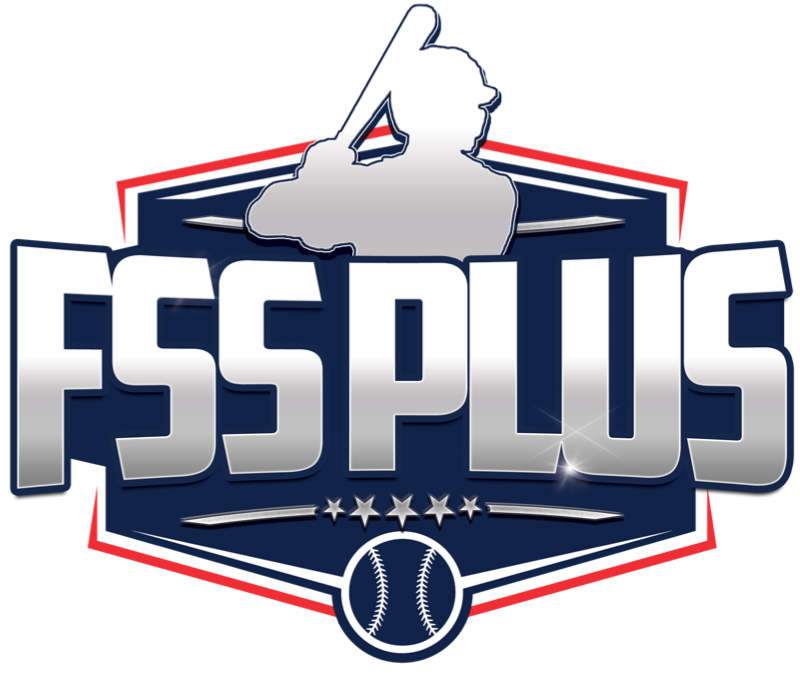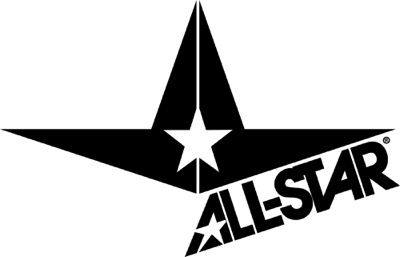Building out a draft board is a complicated exercise. Our process involves meticulous detail in batted-ball data evaluation, switch decision tracking, pitch metrics, athletic testing and one-on-one interactions with the players as we work to get a feel for their makeup. We attend tournaments, showcases, scrimmages and games to watch the players in their element. The whole process is complimented by extensive conversations with scouting directors, analysts, cross-checkers and area scouts to double-check our evaluations with differing opinions to help draw more conclusive ideas.
This update includes a stock watch feature. Any player who has moved up the board by at least 15 spots (half a round) will be highlighted as such next to their name.
EDITOR'S NOTE: The following rankings and evaluations by FSS PLUS are based on subjective analysis and industry sources, and do not influence, are not influenced by, or are affiliated with the opinions and reports of Future Stars Series scouting and development staff.
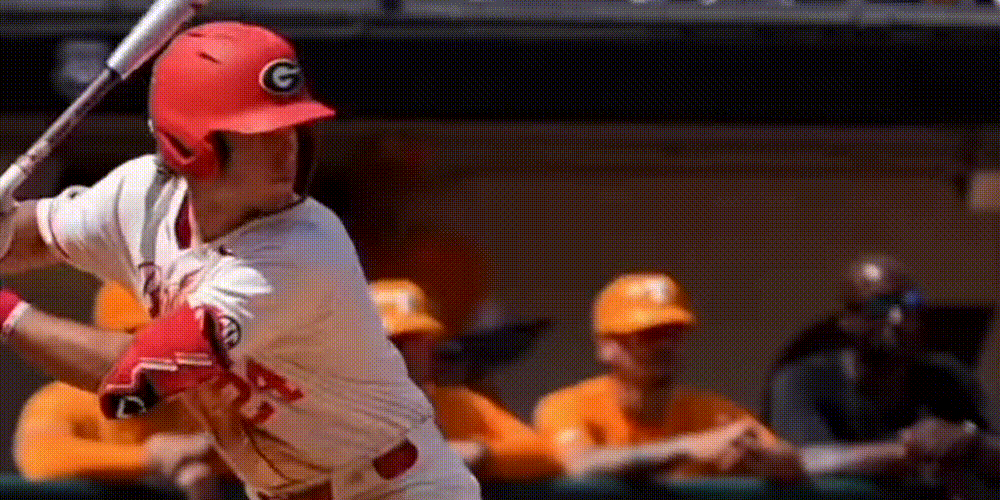
1. Charlie Condon, 3B/OF -- Georgia
HOMETOWN: Marietta, GA
HEIGHT: 6-6
WEIGHT: 216
BAT/THROW: R-R
DRAFT SPOTLIGHT INTERVIEW: Watch video
Condon's emergence for the Bulldogs in 2023 came as a bit of a surprise to the college baseball world after the long, lanky outfielder redshirted in 2022 to add weight and work on his swing. It's a similar player arch to former Florida outfielder Wyatt Langford, and Condon could be following in his footsteps. Condon broke through as the regular left fielder for the Bulldogs last year and immediately provided impact with the bat. He's moving around the field at different positions this spring, but the bat is what ultimately catches the headlines.
He's got double-plus raw power and a hit tool that has continued to improve at the University of Georgia. The swing can get a little long at times, and there's some questions on his ability to make enough contact on pitches outside of the strike zone to be a truly consistent pure hitter at the next level. That's to be expected of a 6-foot-6-inch frame. The levers are long and the path to the baseball will always be more complicated than his peers. Few doubt the impact in the overall offensive profile, even if he may have some small holes in his offensive game at the next level.
Condon may only possess a solid average hit tool when all said and done, but there's 40-homer upside.
Condon has received mixed reviews on his defensive ability, though just about everyone who's laid eyes on him this spring agrees the glove has taken a step in the right direction. He's received a ton of time at third base this year and has showcased at least average athleticism with strong situational awareness and some flair for the highlight reel play. It's still a huge frame that might have trouble playing low enough to the ground to sick at the hot corner long term, but there's a chance. His arm strength is stronger on the dirt than in the outfield receiving above average grades from scouts featuring carry across the diamond. He's moving better than he once did, and the arm strength is plenty strong enough to warrant consideration in right field as a pro -- some considering that his most likely future home.
Condon has the makings of a right-right power-hitting outfielder or third baseman. If Condon's defensive home and athletic prowess get settled as July approaches, he's as good a bet as anyone to go No. 1 in the Draft. There have been Kris Bryant and Nick Castellanos comps thrown on Condon this year.

2. Travis Bazzana, 2B -- Oregon State
HOMETOWN: Sydney, Australia
HEIGHT: 6-0
WEIGHT: 199
BAT/THROW: L-R
DRAFT SPOTLIGHT INTERVIEW: Watch video
You'd be hard-pressed to find a prospect with a better combination of pure hit tool, approach, and peak exit velocities than Travis Bazzana. An import out of Australia, Bazzana possesses plus bat-to-ball skills to go alongside his elite eye. He refuses to expand the zone and has shown a willingness to all fields. He's also about as good as they come in terms of pummeling balls left in the strike zone. He's one of the more decorated hitters in college baseball in terms of fighting off pitches just off the black.
A brutally difficult at-bat for opposing pitchers. Bazzana has flashed plus raw power, and he's getting to a lot of it in games. Bazzana has also upped his efficiency and production against left-handed pitchers this season posting blistering batted-ball data and the same mature approach he showcases against right-handed pitchers. This is a reasonably complete hitter.
An import out of Sydney, Bazzana was a star in the Pac-12 immediately as a true freshman. The Aussie has some twitch and clean actions on the dirt with fringy arm strength and enough athleticism to make the plays to his right and left. He makes all the routine plays despite lacking the natural range necessary for the highlight reel plays. Some scouts want to see what it looks like over an extended period at shortstop, and whether the arm strength would play up from the left side, but that opportunity has yet to truly present itself. There are some who think his profile ends up in centerfield or left field at the next level. He projects a potential plus hitter with above-average power at the next level, all while playing a steady second base.
He also has the potential to steal upwards of 20-plus bags per season at the next level as his high IQ and above average speed should both impact the game immediately on the base paths. He hasn't put the game in motion as much this spring, but scouts still think it can be a part of his game.
Perhaps Bazzana's greatest strength however is tireless pursuit of perfection and improvement in his game. He's an analytic mind who welcomes developing his game through tangible numbers and data evaluation. The kid grinds. His approach toward the game is already well-suited for the next level, and many believe his game should translate quickly to professional ball. He's got a shot at developing into someone like Jason Kipnis at the next level.
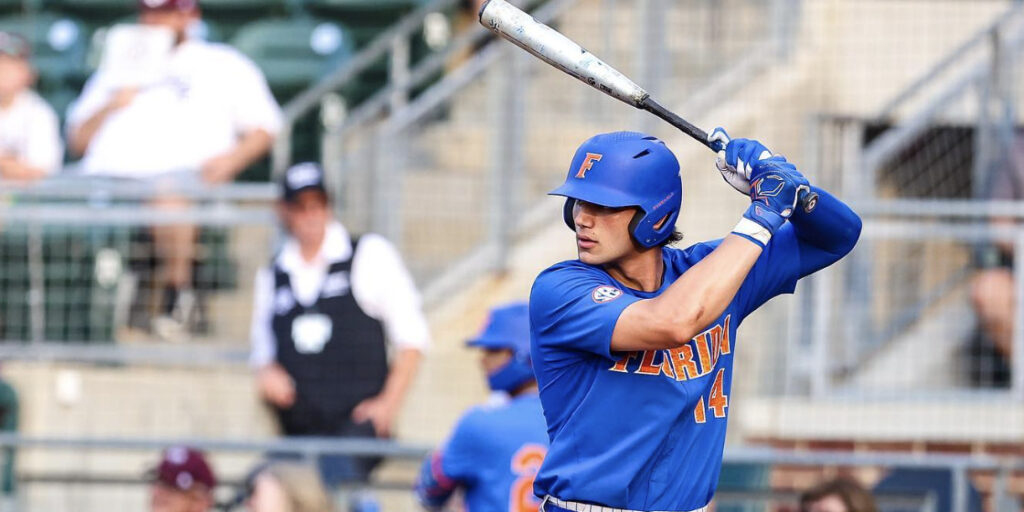
3. Jac Caglianone, 1B/LHP -- Florida
HOMETOWN: Tampa, FL
HEIGHT: 6-5
WEIGHT: 210
BAT/THROW: L-L
DRAFT SPOTLIGHT INTERVIEW: Watch video
Caglianone is possibly the most decorated and talented two-way player college baseball has seen in a very long time. Offensively he possesses immense hand and bat speed allowing the 6-foot-5-inch lefty to get into double-plus, possible elite raw power. Most scouts see plus bat-to-ball skills here, but Caglianone can get anxious at the plate and expand the zone at an unhealthy clip at times. That hasn't slowed his production as his maneuverability allows him to get to pitches outside of the zone and make hard, solid contact. It's remarkable the barrel awareness considering the long levers.
His hands and athleticism in the box have allowed the towering left-handed slugger to hold a strikeout rate near ten-percent all season. Truly remarkable considering his approach. Caglianone is an average runner and is likely destined for first base as a pro, but he's flashed above average defense at the pillow and evaluators believe he'll be plenty comfortable at that spot full-time. He's also a rangy defender who's shown spacial awareness tracking balls over his shoulder into foul territory. This is an impact bat with 40-home run upside if pitch selection matures.
On the mound, he's been up to 101 in side sessions and 99 in games and will flash an above average slider that's really come on of late. There's also a changeup, though it lags a bit behind his primary two-pitch mix. Caglianone is a legitimate pitching prospect with no. 4 upside, though there is considerable reliever risk due to command concerns and his ability to repeat his operation deep into starts. He worked hard over the past 12 months to shorten his arm action and tighten up his elbow spiral, and that seems to have paid dividends in his ability to control the ball. He's still very young and has plenty of time to shore up the polish and consistency of those mechanical necessities.
There are a multitude of avenues Caglianone can take to become a valuable and productive big leaguer. Which route he'll choose, and which route scouts prefer for that matter is yet to be determined, though most point toward the offensive upside without hesitation. Caglianone has the chance to develop into one of the elite first basemen in the sport.

4. Braden Montgomery, OF -- Texas A&M
HOMETOWN: Madison, MS
HEIGHT: 6-2
WEIGHT: 220
BAT/THROW: B-R
DRAFT SPOTLIGHT INTERVIEW: Watch video
Braden Montgomery is an absolute tool-shed with physical abilities very few in the 2024 class can match. He's been a stud prospect since his high school days, but signing a player away from a Stanford commitment always proves difficult. He's now at Texas A&M.
A two-way guy by nature, Montgomery likely best projects as a prototype right fielder with plus power, some calling it 70-grade raw, as well as above average athleticism both on the base paths and in the field. He's shown tremendous barrel control, as well as a refined eye at the plate.
Montgomery is hitting the ball harder than ever before in 2024, and his chops from the right side of the plate continue to develop to the point scouts believe he's got a shot to switch-hit as a professional. The approach and bat-to-ball skills have also taken a step forward in the early portion of the season.
He's cut down his swing-and-miss every year since heading to college and that's important as scouts would like to see the hit tool take off as July approaches.
Montgomery might have the best outfield arm in the class, a truly elite cannon with pinpoint accuracy. On the mound, Montgomery has struggled to command the fastball, but he's been up to 97 with a formidable cutter and a swing-and-miss breaking ball when he's in the zone.
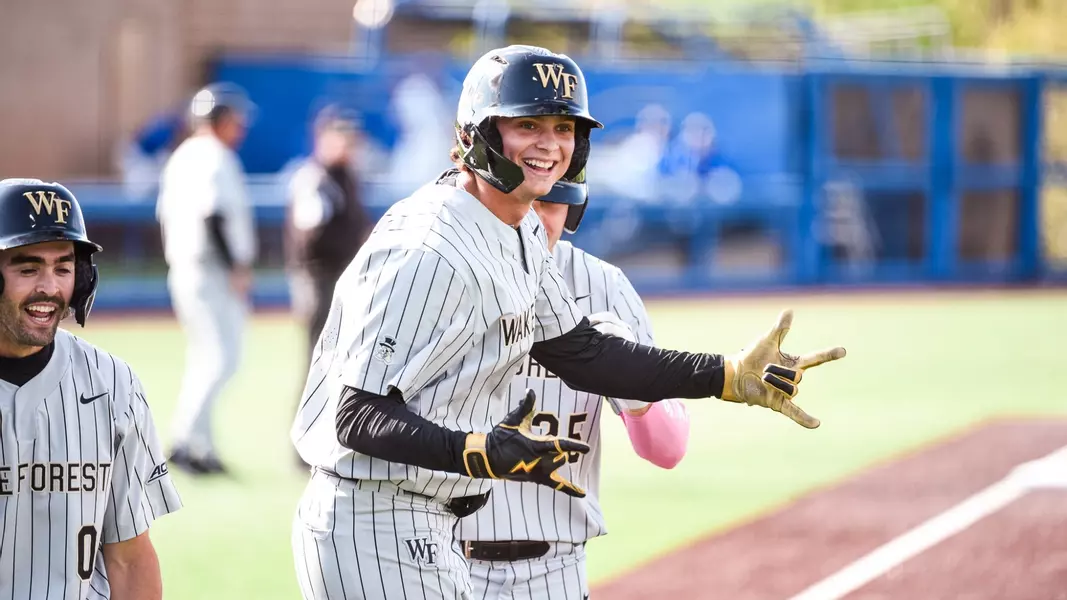
5. Nick Kurtz, 1B -- Wake Forest
HOMETOWN: Lancaster, PA
HEIGHT: 6-5
WEIGHT: 235
BAT/THROW: L-L
DRAFT SPOTLIGHT INTERVIEW: Watch video
Kurtz burst onto the scene as a true freshman posting some of the most impressive batted-ball and swing-decision metrics of anyone during the 2022 college baseball season. Those metrics carried over to the 2023 season as Kurtz proved himself one of the most feared hitters in the sport. It was a slow start to the 2024 season compounded by bumps and bruises, but he's returned from injury and once again looks like arguably the best hitter in the country as many assumed he'd be entering the spring.
Some evaluators believe Kurtz may be the best power hitter in the 2024 class, and that's saying a lot considering some of the names he's mentioned alongside. It's absolutely mammoth bat speed and buggy hips from the left side. It's every bit that of double-plus juice. Kurtz possesses above average bat-to-ball skills with an elite eye at the plate, hardly ever expanding the zone. He's the prototype middle-of-the-order slugger.
Kurtz is an average runner underway with solid baseball instincts and the ability to impact the game on the base paths if you don't pay attention to him. He's a solid average glove at first base and can get by as something close to a fringy left fielder, though scouts prefer he stay on the dirt for durability's sake. Kurtz has a chance to anchor a big league lineup for a long, long time. He reminds some of Jim Thome.
